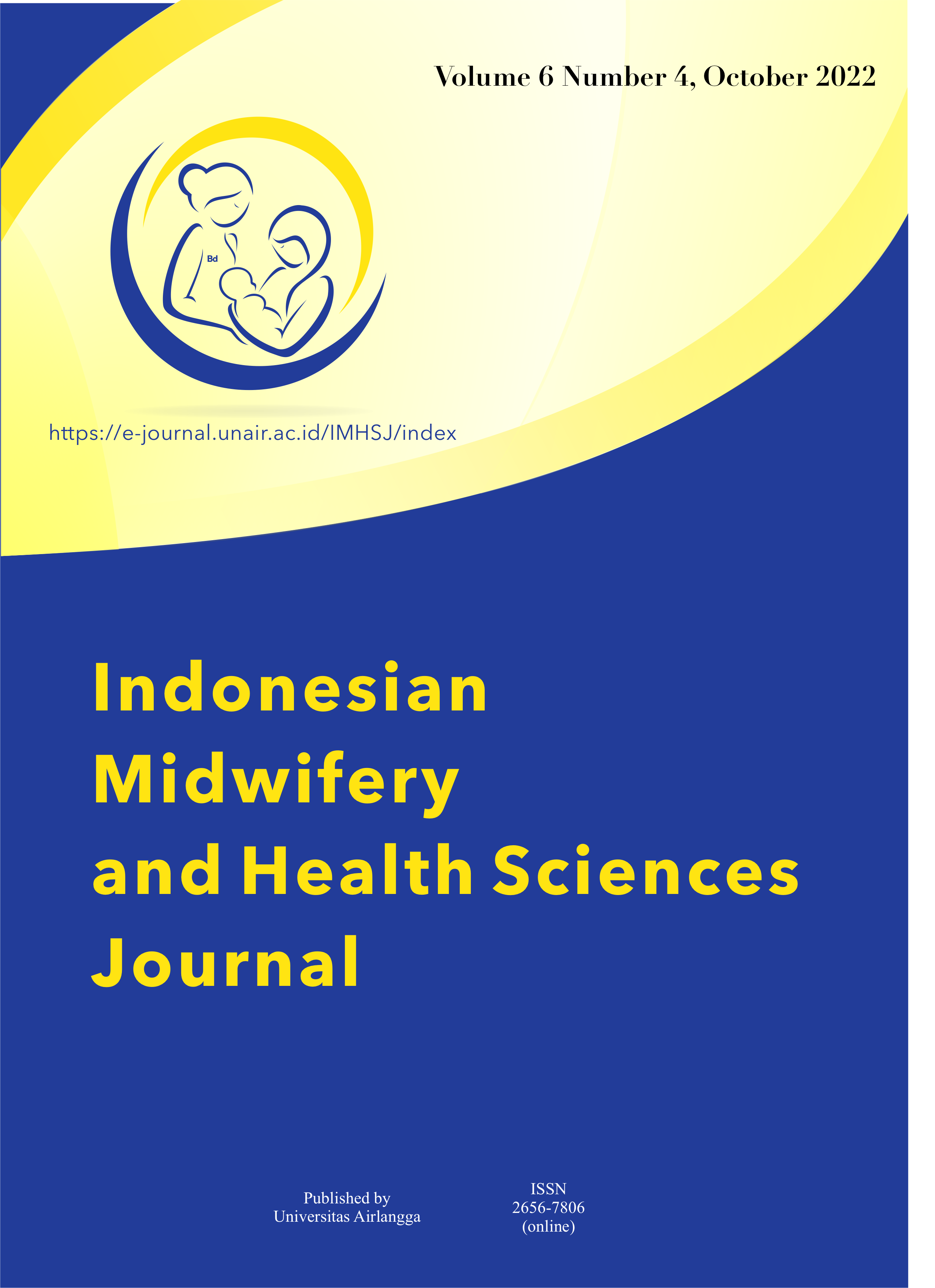EFFECT OF BREAST CARE IN PUBLIC WOMEN ON NEONATE WEIGHT INCREASE

Downloads
Background: Breastcare is one of the interventions that can be done to increase and overcome the lack of breast milk so that it can rule out formula milk as an alternative. One of the signs that breast milk is finally in the sufficient phase can be seen in the baby's weight gain. The purpose of this study was to analyze the effect of breastcare on postpartum mothers on increasing neonatal weight at PMB Noris Hadi Boyolali. Methods: quasi-experimental research design with pretest-posttest control group design. The number of samples was 22 postpartum mothers with purposive sampling technique. The independent variable was breast care for postpartum mothers for the intervention group once a day from day 10-13 (a total of 4 times) and the control group once on day 10, the dependent variable was the increase in neonatal weight which was examined on days 10 and 14. The instruments used are SOP for postpartum mother's breastcare and baby scales. Data analysis used Wilcoxon test, paired t test, and Mann Whitney test. Results: The results of the analysis of the effect of breastcare on postpartum mothers on increasing neonatal weight with the Mann Whitney test obtained p value = 0.208, meaning that there is no effect of breastcare on postpartum mothers on increasing neonatal weight.Conclusions: There was no difference in neonatal weight before and after breastcare was given to postpartum mothers between groups. There was no effect of breastcare on postpartum mothers on the increase in weight of neonates statistically, but the increase in weight of neonates in the intervention group was greater than in the control group.
Keywords: breast milk, breast care, neonate weight
Copyright (c) 2022 Aurelia Margaretha Manurung, Martono Tri Utomo, Woro Setia Ningtyas

This work is licensed under a Creative Commons Attribution-ShareAlike 4.0 International License.
1. The journal allows the author to hold the copyright of the article without restrictions.
2. The journal allows the author(s) to retain publishing rights without restrictions
3. The formal legal aspect of journal publication accessibility refers to Creative Commons Atribution-Share Alike 4.0 (CC BY-SA).
This Journal (e-ISSN 2656-7806) is licensed under a Creative Commons Attribution-ShareAlike 4.0 International License.
















